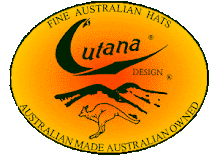Riding through the small oasis settlements beyond Yumen has been very enjoyable as the countryside is quiet and unspoilt and the people friendly but curious. Below is the crowd we attracted at a lunch stop!
 However we also had our first brush with officialdom. At our first overnight stop Sandaogou we were approached by a very earnest and polite young policeman who required us to sign a registration form – the first time it has happened since I started riding! Then at the next village we were met by a posse of local officials who wanted to examine our passports, know where we were going, how long we were staying etc – I suspect they were just nosey.
However we also had our first brush with officialdom. At our first overnight stop Sandaogou we were approached by a very earnest and polite young policeman who required us to sign a registration form – the first time it has happened since I started riding! Then at the next village we were met by a posse of local officials who wanted to examine our passports, know where we were going, how long we were staying etc – I suspect they were just nosey.On Wednesday we stayed at Bulongqi, where there are the ruins of an old city which French and Cable estimated must have held at least 50,000 inhabitants. All that can be seen now is a ruined citadel and the remains of the old city wall. Unfortunately we found no sign of the treasure which lies buried beneath according to local legend. It would have come in handy.
 The following day I had planned a slight detour which turned out to be an excellent decision, as it took us along a deserted gravel road for miles through an extensive area of wetland inhabited by a variety of birds, some of which we recognised (herons)and some not.
The following day I had planned a slight detour which turned out to be an excellent decision, as it took us along a deserted gravel road for miles through an extensive area of wetland inhabited by a variety of birds, some of which we recognised (herons)and some not.  But it was a long and weary day’s ride with no welcoming inn at the end, so we were very grateful to find shelter in the building below, courtesy of local farmer Mr Chen. The black mats are actually cotton seeds spread out to air before planting.
But it was a long and weary day’s ride with no welcoming inn at the end, so we were very grateful to find shelter in the building below, courtesy of local farmer Mr Chen. The black mats are actually cotton seeds spread out to air before planting. Our room was deep in dust and here is Peng sweeping it out at my suggestion – not a very good one as you can see...
Our room was deep in dust and here is Peng sweeping it out at my suggestion – not a very good one as you can see...  Here is the room some time later when the dust had settled….
Here is the room some time later when the dust had settled….
…and after we had demolished several large bowls of delicious noodles provided by our generous host, shown here with brother in law and replete foreigners. 



 There we survived yet another freezing night in an unheated room huddled up in our sleeping bags with all our clothes on. The following morning we had a quick foray in the truck out through the ice bound countryside to Hongshan, the hills looking more white than red with a heavy frosting of snow. It took some imagination to visualise a celandine meadow in the frozen wastes.
There we survived yet another freezing night in an unheated room huddled up in our sleeping bags with all our clothes on. The following morning we had a quick foray in the truck out through the ice bound countryside to Hongshan, the hills looking more white than red with a heavy frosting of snow. It took some imagination to visualise a celandine meadow in the frozen wastes. It was a cold and weary pair of riders that turned up at the only buildings for miles - a coal depot with no lodgings. And truck had broken down in Chijinpu, though Peng sorted it out during the day. Happily the managers took pity on two frozen foreign women of a certain age. Not only were we shown to a room with bunk beds and a WORKING RADIATOR, but they also gave us an electric fire. A hot shower in the washroom, and a noodle supper in the kitchen, and we were considerably more perky.
It was a cold and weary pair of riders that turned up at the only buildings for miles - a coal depot with no lodgings. And truck had broken down in Chijinpu, though Peng sorted it out during the day. Happily the managers took pity on two frozen foreign women of a certain age. Not only were we shown to a room with bunk beds and a WORKING RADIATOR, but they also gave us an electric fire. A hot shower in the washroom, and a noodle supper in the kitchen, and we were considerably more perky. Today (Monday) we arrived at Yumen or Jade Gate, but it was a little disconcerting to see this sign on the way, considering we have just spent six days riding from Jiayuguan.
Today (Monday) we arrived at Yumen or Jade Gate, but it was a little disconcerting to see this sign on the way, considering we have just spent six days riding from Jiayuguan. 
 After donning all our thermal underwear and waving goodbye to our Muslim friends (who were even more friendly after we had presented them with a donation towards the new mosque), we set out through an icy blizzard.
After donning all our thermal underwear and waving goodbye to our Muslim friends (who were even more friendly after we had presented them with a donation towards the new mosque), we set out through an icy blizzard. The horses are still in their thick winter coats so did not seem at all troubled by the conditions.
The horses are still in their thick winter coats so did not seem at all troubled by the conditions. 
 We are staying in spotless guest house. However although our room has an enormous radiator, it is absolutely freezing, and we are debating whether the proprietoress said the heating was turned on at night or at a certain time of year. Worryingly Rowena says she (the proprietoress) has a mountain of quilts on her bed. I think a little nip of vodka is called for.
We are staying in spotless guest house. However although our room has an enormous radiator, it is absolutely freezing, and we are debating whether the proprietoress said the heating was turned on at night or at a certain time of year. Worryingly Rowena says she (the proprietoress) has a mountain of quilts on her bed. I think a little nip of vodka is called for.
 Our room was in the middle of the block shown above, and backed onto a straw yard full of sheep and lambs – the little overnight sounds of rustling straw and bleats was quite comforting to an ex sheep farmer such as myself. Less welcome was the constant barking of the many tethered dogs – accounted for in the morning when it transpired that Shandan had escaped his headcollar and had been inspecting the premises. The room was somewhat spartan – its only content being a bicycle and a lot of dust – but it was dry and relatively warm. And our friendly hostess cooked us a welcome bowl of spiced lamb.
Our room was in the middle of the block shown above, and backed onto a straw yard full of sheep and lambs – the little overnight sounds of rustling straw and bleats was quite comforting to an ex sheep farmer such as myself. Less welcome was the constant barking of the many tethered dogs – accounted for in the morning when it transpired that Shandan had escaped his headcollar and had been inspecting the premises. The room was somewhat spartan – its only content being a bicycle and a lot of dust – but it was dry and relatively warm. And our friendly hostess cooked us a welcome bowl of spiced lamb. And eventually arrived at our present destination, Huihuipu. This is a great excitement for me as it was the ‘Muslim tomb halt’ visited by the Trio, and the first stage on their journeys west. It is the site of the tomb of a great Muslim pilgrim, one of three who journeyed from ‘distant lands in the west’. Francesca French and Mildred Cable describe ‘a small, square, mud-built tomb, with domed roof and a crenated border’. This old tomb was later replaced by a larger building, and two years ago by a tall pagoda like tower, the top of which we could see peeping over the hills like a welcome beacon from a couple of miles away.
And eventually arrived at our present destination, Huihuipu. This is a great excitement for me as it was the ‘Muslim tomb halt’ visited by the Trio, and the first stage on their journeys west. It is the site of the tomb of a great Muslim pilgrim, one of three who journeyed from ‘distant lands in the west’. Francesca French and Mildred Cable describe ‘a small, square, mud-built tomb, with domed roof and a crenated border’. This old tomb was later replaced by a larger building, and two years ago by a tall pagoda like tower, the top of which we could see peeping over the hills like a welcome beacon from a couple of miles away.  There is a flurry of building activity taking place here at present, with a new mosque in the process of construction (see above photo) together with a new accommodation block for visiting pilgrims. To my delight, Peng organised for us to stay in the current visitors accommodation, a splendid room boasting a sleeping platform covered with carpets and furnished with colourful quilts, and a large stove which has been lit for us so we are in a warm little haven.
There is a flurry of building activity taking place here at present, with a new mosque in the process of construction (see above photo) together with a new accommodation block for visiting pilgrims. To my delight, Peng organised for us to stay in the current visitors accommodation, a splendid room boasting a sleeping platform covered with carpets and furnished with colourful quilts, and a large stove which has been lit for us so we are in a warm little haven. The novelty of hosting long distance horseback travellers who also have a keen interest in the tomb means we are being treated like royalty, with endless cups of Chinese tea and a ‘historic’ spicy mutton stew served with enormous bowls of rice. We have had a constant stream of curious but congenial visitors checking over the foreigners belongings (my air bed and laptop are always a great source of interest) and watching them eat (they can actually use chopsticks!).
The novelty of hosting long distance horseback travellers who also have a keen interest in the tomb means we are being treated like royalty, with endless cups of Chinese tea and a ‘historic’ spicy mutton stew served with enormous bowls of rice. We have had a constant stream of curious but congenial visitors checking over the foreigners belongings (my air bed and laptop are always a great source of interest) and watching them eat (they can actually use chopsticks!).
 We also sorted out several bags of hard feed. Compared with home, where I just nip down to W.D Lewis and Sons and pick up a few bags of balanced mix, it was quite a complicated process, involving trips to a small mill which had no grain, so on to another small mill, a dealer in town, and a remote farmyard to buy bran and maize, and then back to the first small mill (the grinding machine in the second mill had broken down) to get it ground and bagged. The photo shows Peng on the left feeding in maize, the mill owner on the right feeding in bran, and Mr Zhong acting as overseer.
We also sorted out several bags of hard feed. Compared with home, where I just nip down to W.D Lewis and Sons and pick up a few bags of balanced mix, it was quite a complicated process, involving trips to a small mill which had no grain, so on to another small mill, a dealer in town, and a remote farmyard to buy bran and maize, and then back to the first small mill (the grinding machine in the second mill had broken down) to get it ground and bagged. The photo shows Peng on the left feeding in maize, the mill owner on the right feeding in bran, and Mr Zhong acting as overseer.  I had once again received dire warnings from Chinese friends about the arctic conditions I should expect out in the sticks at this time of year, but it has so far been quite pleasant, though everything was frozen at Shandan stud and we even had a few flakes of snow just as we left. Although hardly fat, the horses are not as thin as I had feared they might be after the long winter, and should quickly pick up with the three to four hard feeds a day they will be gobbling down from now on. As they have not been trained to stand for shoeing, we were forced to let them be shod the traditional way by being restrained in a shoeing frame. I always find this extremely distressing when it is carried out by unsympathetic handlers as we had this time. It does Zorbee in particular absolutely no good to be treated roughly, and negates all the sensitive handling my Chinese co-riders have put in. At least the ever gentle Peng will be in charge of this job from now on.
I had once again received dire warnings from Chinese friends about the arctic conditions I should expect out in the sticks at this time of year, but it has so far been quite pleasant, though everything was frozen at Shandan stud and we even had a few flakes of snow just as we left. Although hardly fat, the horses are not as thin as I had feared they might be after the long winter, and should quickly pick up with the three to four hard feeds a day they will be gobbling down from now on. As they have not been trained to stand for shoeing, we were forced to let them be shod the traditional way by being restrained in a shoeing frame. I always find this extremely distressing when it is carried out by unsympathetic handlers as we had this time. It does Zorbee in particular absolutely no good to be treated roughly, and negates all the sensitive handling my Chinese co-riders have put in. At least the ever gentle Peng will be in charge of this job from now on. Yesterday evening I noticed that surprisingly for a population that is not reputed to have money to burn, people were setting fire to little piles of banknotes everywhere by the roadside, and even encouraging their children to join in. Was it some sort of mass protest against rising commercialism? It transpired that it was Ancestors day, when the Chinese burn fake money (and other useful things such as very small paper replicas of very large mansions) to send to their dear departed in the afterlife.
Yesterday evening I noticed that surprisingly for a population that is not reputed to have money to burn, people were setting fire to little piles of banknotes everywhere by the roadside, and even encouraging their children to join in. Was it some sort of mass protest against rising commercialism? It transpired that it was Ancestors day, when the Chinese burn fake money (and other useful things such as very small paper replicas of very large mansions) to send to their dear departed in the afterlife.















